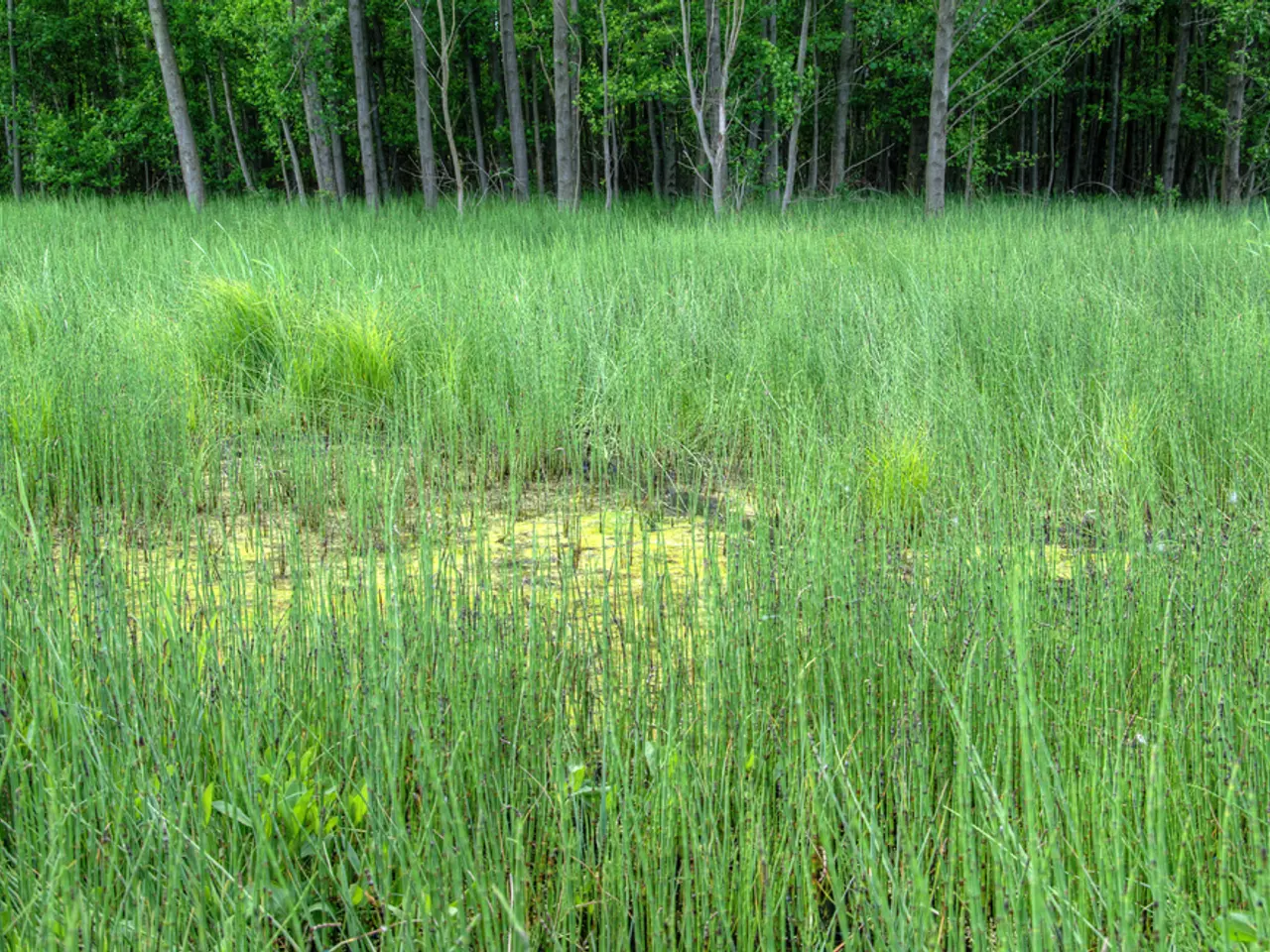Agriculture Industry Revolution through IoT Technology: Comprehensive Insight
In the rapidly evolving world of technology, the Internet of Things (IoT) is making significant strides in various sectors, and agriculture is no exception. IoT technology is revolutionizing industries like indoor farming, livestock management, and aquaculture, promising a more sustainable and efficient future for agriculture.
According to industry analysts, the global agricultural IoT market is projected to reach a valuation of $13 billion by 2026 [1]. This growth is driven by the integration of AI and Machine Learning (ML) in agricultural operations, enabling smart farming practices that promote ecologically friendly methods and improve decision-making procedures [2].
Smart Sensor Networks for Data Collection
At the heart of this transformation are smart sensor networks that continuously monitor crucial environmental factors, such as soil moisture, temperature, humidity, wind speed, and crop growth parameters [1][2]. This data enables precision farming by optimizing irrigation, fertilization, and pest control, reducing costs and increasing yields [1][2].
Automated Irrigation Systems
IoT-enabled irrigation systems deliver water precisely based on real-time crop and soil needs, lowering water use and minimizing waste while improving crop health, especially under variable climate conditions [1][3].
AI-Driven Pest Monitoring
By combining IoT sensors with AI, farmers can analyze insect populations to guide targeted pesticide application, reducing chemical use and expenses [5].
Drones and Remote Sensing
Drones equipped with high-resolution multispectral imaging capabilities can detect crop stress and guide timely interventions, enhancing decision-making beyond traditional farming approaches [2].
Precision Agriculture with Data Analytics
Collected IoT data feeds into AI and machine learning models that forecast yields, identify anomalies, and support resource allocation tailored to specific plots, thus improving operational planning and risk management [2][4].
Decision Support Systems (DSS)
Integrated IoT data, crop growth models, and AI provide actionable recommendations to farmers for optimizing practices like planting, irrigation, and fertilization with tools such as DSSAT (Decision Support System for Agro-Technology Transfer Model) [4].
Farm Machinery and Fleet Management
IoT tracks machinery usage, maintenance, and logistics in real time, boosting operational efficiency and reducing downtime [3].
These IoT solutions collectively enhance production efficiency, resource use, and environmental sustainability in modern agriculture. While challenges such as initial investment costs, connectivity issues in rural areas, and the need for farmer training persist, the trend toward smart farming driven by IoT and AI is foundational for addressing global food security by 2050 [1][4].
IoT-Enabled Transportation and Value Chain
IoT-enabled systems can ensure that farm produce is transported optimally and transparently while ensuring the upstream and downstream of the farm value chain are sustainable and efficient.
Data Security and Privacy
To safeguard sensitive agricultural data, it's crucial to prioritize strong security measures, use access controls, secure communication protocols, and encryption [6]. Farmers should also stay informed about and abide by local laws regarding data privacy in agriculture.
The Future of Agriculture with IoT
IoT will allow farmers to maximize resource use, reduce climate risk, and implement eco-friendly methods emphasizing sustainability. Implementing IoT in agriculture reduces costs, increases productivity, and opens up growth opportunities.
Innovative solutions like the MAAN app, created by Appinventiv, are already making a difference. MAAN is an agriculture education-based mobile app designed for NMA nations, creating a community of people working towards a single cause to improve the nutritional conditions of remote mountain areas [7].
As we move forward, IoT devices will continue to enable the collection and real-time analysis of data through sensors and drones, optimizing resource use and leading to better economic returns. With the right approach and investment, IoT technology has the potential to revolutionize agriculture, ensuring food security for generations to come.
References:
[1] IoT Analytics. (2021). IoT in Agriculture Market Report 2020-2025. Retrieved from https://www.iot-analytics.com/research/iot-in-agriculture-market/
[2] Beresford, M. (2020). The Internet of Things (IoT) in Agriculture. Retrieved from https://www.agriculture.com/topics/technology/the-internet-of-things-iot-in-agriculture
[3] The Economist. (2020). The Internet of Cows. Retrieved from https://www.economist.com/leaders/2020/06/27/the-internet-of-cows
[4] Food and Agriculture Organization of the United Nations. (2020). Digital Agriculture: A Review of the State of the Art. Retrieved from https://www.fao.org/3/ca9709en/ca9709en.pdf
[5] Srivastava, A., & Srivastava, A. (2019). A Review on Internet of Things (IoT) in Agriculture. International Journal of Advanced Research in Computer Science and Software Engineering, 10(4), 1-10.
[6] National Cyber Security Centre. (2020). Securing the Internet of Things. Retrieved from https://www.ncsc.gov.uk/guidance/securing-internet-things
[7] Appinventiv. (n.d.). MAAN – Agriculture Education Mobile App. Retrieved from https://www.appinventiv.com/casestudy/maan-agriculture-education-mobile-app/
- The integration of AI and Machine Learning in agricultural operations, driven by the digital transformation in technology, is promoting ecologically friendly methods and improving decision-making procedures in farming.
- To ensure food security for generations to come, the static farming approaches of the past are being replaced by a smart, sustainable, and eco-friendly lifestyle dependent on the magic of IoT technology, facilitating precision agriculture through data collection, analytics, and AI-driven measures such as automated irrigation systems and pest monitoring.




